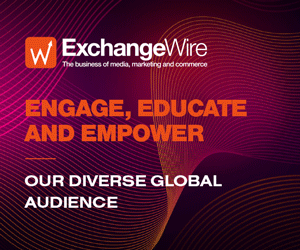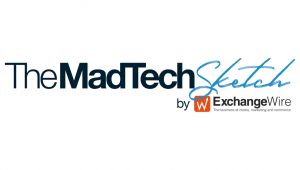Lumen’s Josh Barnett on Increasing ROI with Attention and the Move Away from Viewability Metrics
by on 19th Feb 2025 in News

We sat down with Josh Barnett, MD of LAMP at Lumen, to delve into attention, with a focus on how the metric can help advertisers cut costs while increasing ROI. He expands on how attention metrics have transformed the advertising ecosystem and what lessons can be drawn from the shift from viewability metrics to attention.
Before attention metrics came about, how did the reliance on assumed attention impact the early landscape of digital advertising?
Over the past decade, there has been the assumption that ads that were viewable were being looked at. Take Times Square as an example: the square is plastered in ads, but we know that just because all of those ads are in view, doesn’t mean people are actually looking at them. We also know that the ads people look at vary. Most importantly, the time spent looking at them varies massively, too.
Too often, advertisers are using viewability statistics in order to try to get an understanding of the reach of their campaigns. We believe that viewability statistics are misleading. It’s often said that 80% of ads are viewable, however, at Lumen, we have carried out an analysis which shows that 70% of digital ads are not looked at, at all. This means that on average, if you’re spending a million pounds on advertising, £700,000 of it is going to waste.
If we can optimise towards ads that are actually viewed, we can make massive gains. But the gains shouldn’t be just in terms of attention itself – attention is a vehicle to drive outcomes, rather than the outcome itself.
What lessons can be drawn from this shift about the limitations of viewability as a proxy for attention?
It’s all about harnessing the best data available. Until attention measurement became widely available, the best data we had access to was viewability. The key lesson here is: do not rest on your laurels when it comes to measurement techniques – embrace new ones. Always look to evolve.
As a brand, it’s not a bad thing if you’re not currently using attention metrics – but you have an opportunity to get a better understanding of what is happening in your campaigns. There have been some early adopters, but you are not too late to the party.
How do you think the emergence of attention metrics based on real-world eye-tracking data has reshaped the way advertisers approach measuring and optimising attention?
There has been a huge shift for advertisers using attention metrics. It has changed the way they think about their media, specifically in regard to how they are connecting with their audience. From a measurement perspective, it drastically changes their understanding of real reach. Attention metrics massively reshape the reach curve. Advertisers can get a far greater understanding of their known audience, and where their money is actually going. By understanding and optimising towards these metrics, campaign performance and tangible outcomes can be easily improved.
Understanding how to use attention metrics is really key. For example, a challenger brand might require more attention than a household brand to drive the same outcome. We know that not all attention is equal, so understanding the nuance is really important. Apple, for example, might only need one second of attention to make people aware that there is a new iPhone, whereas a new phone brand will probably require more attention.
Another point to bear in mind is that low attention time on a particular platform or channel is not necessarily a bad thing – it just means advertisers need to optimise for that level of attention time. As an example, a specific ad type might function more like a poster than a TV ad. By knowing this, advertisers can put the right ad in the right place, and optimise for the environment.
Can you provide examples or strategies of how media agencies and brands can effectively integrate attention metrics to increase ROI and reduce waste?
We like to think of attention as a journey – we don’t expect advertisers to have all the answers at the end of a single campaign. Instead, we like to work with our clients to come up with hypotheses around how attention can be used, and how it interacts with outcomes as well as any other partners they might work with. We look to create a set of experiments which prove not only that attention broadly links to the outcomes they require, but also to really understand what attention means for them.
While more attention is never a bad thing, more attention usually costs more money. So if you can target the right level of attention, instead of simply aiming for more, you can cut costs. This way, advertisers can also avoid wasting money on ads that are getting a lot of attention when they aren’t actually needed to drive the desired outcome.
At the moment, we are also working on aggregate attention with the aim of understanding: what is the total dose of attention time that a single customer needs to drive the desired outcome? If this is five seconds of attention in total, this could be split either across one ad that gets five seconds of attention, or ten ads that each get half a second of attention. We are working with agencies and brands to understand how they can best plan campaigns to achieve the right amount of total attention.
We’re also looking at how this differs across different platforms. Does two seconds of attention on TikTok have the same value as two seconds of attention on a Meta platform? If you’re looking to drive five seconds of attention, can you do that across all platforms, or are some platforms more valuable than others? We’re aiming to write global playbooks with our partners which, broadly speaking, set out how much attention is needed to drive particular outcomes for media campaigns, such as an awareness outcome, or purchase intent. Based on this, attention can then be used as a lead indicator of outcomes. You can know with relative confidence that buying a certain number of seconds of attention for your media campaigns is likely to drive the outcomes you desire.
Lastly, collaboration with other media partners is a big part of the attention journey. How does attention and accurate audience targeting work together? Advertisers should have a full view of what is happening on their media plan.











Follow ExchangeWire